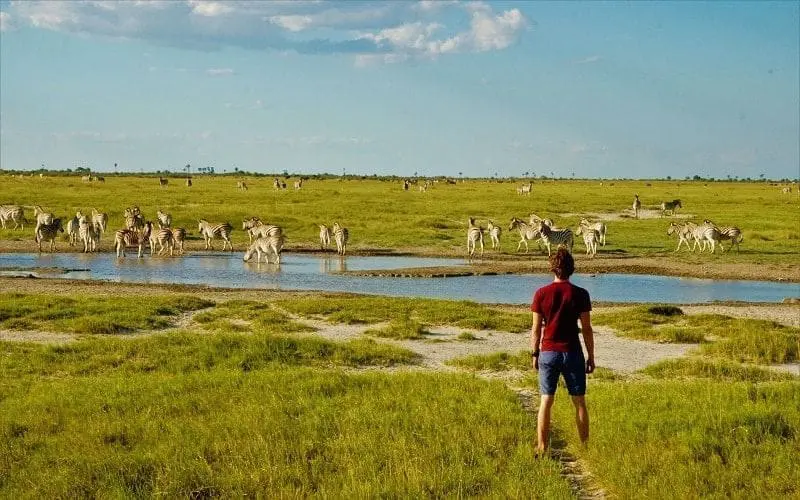Best travel time: June – August and December – February
The climate in
Botswana—there’s even a fancy name for it: a semi-arid climate. From October to April, there’s a bit of rain. Roads can be trickier to navigate, and the
Okavango Delta is significantly wetter than the rest of the year. During this period, you’ll get stunning sunrises with clouds painting the sky in purples and pinks.
In winter—our summer—there’s less rain, but you might experience sand and dust storms, with August being particularly known for this. Think epic Mad Max vibes with a pair of sand goggles!
Gaborone
The capital of breathtaking Botswana is
Gaborone, located in the far southeast of the country. Gaborone is a relatively young city—people only started settling here permanently in the nineteenth century. Today, around 250,000 people live here, which is quite a lot in sparsely populated Botswana.
The city has a warm steppe climate, with hot summers and mild winters. From June to August, it’s almost bone-dry, while the rest of the year sees a bit of rain from November to January. But don’t worry—you’re unlikely to get properly soaked here.
Kalahari Desert
The word
Kalahari means 'great thirst'... What’s in a name? During the day, temperatures often hit around 30 degrees, while at night, they can drop to as low as minus 10 degrees. From April to October, it’s bone-dry here.
From November to February, there’s the occasional drop of rain, but it’s nothing like the rainy seasons you find in other parts of East Africa. However, thanks to those few drops of water, the landscape does look significantly greener during our winter months.
Ghanzi
The heart of San culture lies in western Botswana. Ghanzi has a steppe climate that can get extremely hot. It’s mostly dry here, with the little rain that does fall usually coming between November and February.
During the day, it’s scorching—temperatures above 30 degrees are more the rule than the exception—and then the nights turn icy cold.
Gweta
In the northeast of Botswana lies yet another extreme and remarkable natural phenomenon: the Makgadikgadi Salt Pans. These vast plains, covering 16,000 square kilometres—about half the size of Belgium—are the largest salt pans in the world. There's hardly any rainfall here, with only a few drops between December and March. The days are scorching, while the nights are chilly.
Kasane
If you're heading to
Chobe, you'll likely do your shopping in Kasane. It’s seriously even hotter here than in the rest of Botswana. Yes, really! Thankfully, it does rain a bit more here than in other parts of the country—phew! The ‘wet’ season runs from November to March.
Maun
Maun lies on the Thamalakane River and is the capital of the Batawana people. For many travellers, Maun is the starting point for their safari through Botswana. The town has a steppe climate, with most of the rain falling in summer, which coincides with our winter. The temperature difference between day and night is extreme—sometimes as much as 25 degrees! So, definitely pack thermal underwear and socks for your trip this way. From April to October, there’s virtually no rain.
Shakawe
Not far from the border with Angola and
Namibia lies this town, which, to be fair, feels more like a large village. Just outside Shakawe, you’ll find Tsodilo—a desert area known for its ancient rock paintings. It’s also a great launch point for exploring the Okavango Delta. Plenty to do here, although the arid landscape is as bare as your grandad’s bald head. With its hot summers and mild, dry winters, Shakawe also enjoys a steppe climate.
